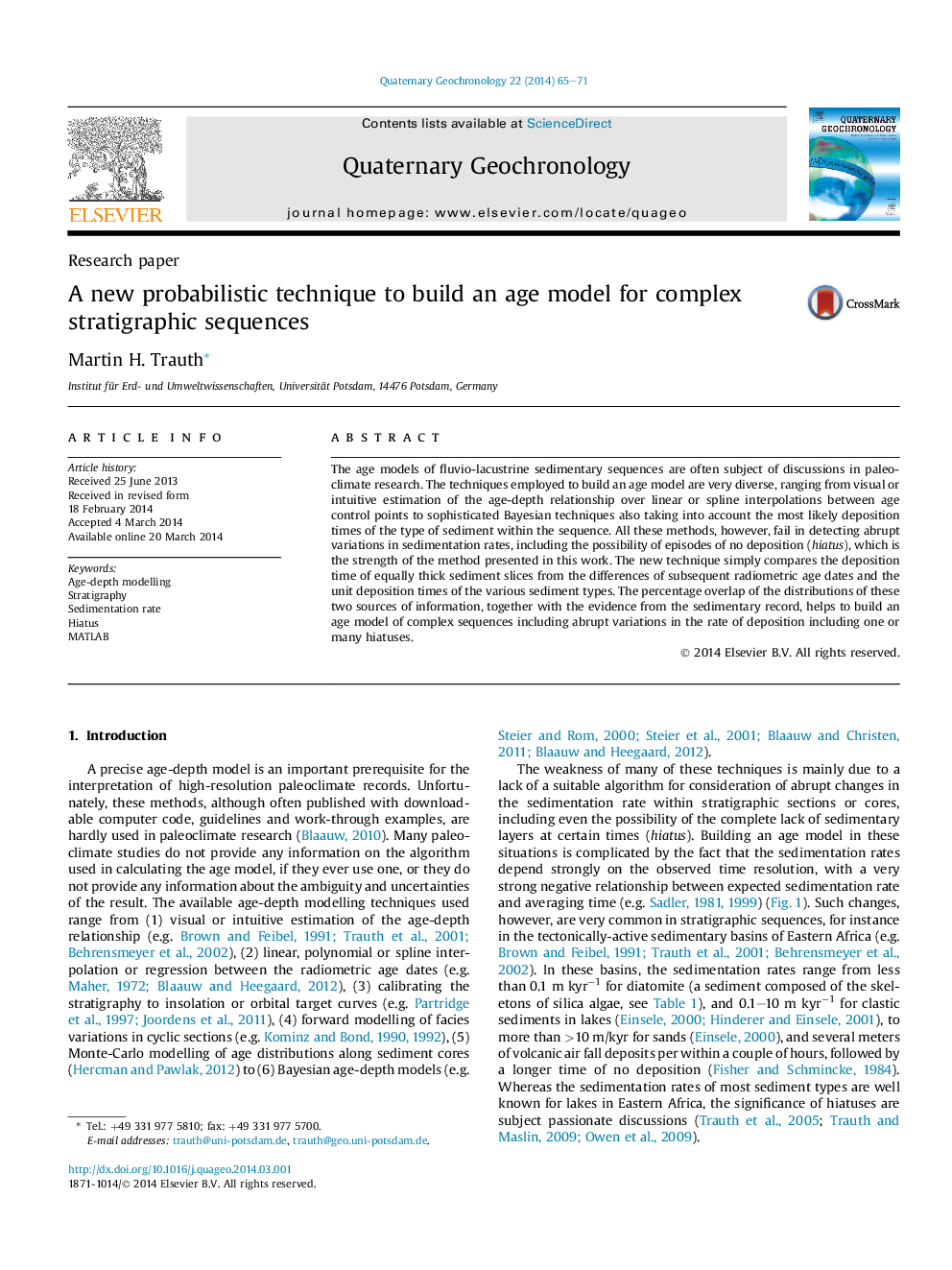| Article ID | Journal | Published Year | Pages | File Type |
|---|---|---|---|---|
| 4724961 | Quaternary Geochronology | 2014 | 7 Pages |
•A new technique to build an age-depth model for stratigraphic sequences is presented.•The technique estimates the unit deposition times of equally thick sediment slices.•The percentage overlap of the estimates from radiometric ages and sediment types is determined.•The overlap helps to detect abrupt variations in the rate of deposition including hiatuses.•The technique is useful to model age-depth relationships in complex stratigraphic sections.
The age models of fluvio-lacustrine sedimentary sequences are often subject of discussions in paleoclimate research. The techniques employed to build an age model are very diverse, ranging from visual or intuitive estimation of the age-depth relationship over linear or spline interpolations between age control points to sophisticated Bayesian techniques also taking into account the most likely deposition times of the type of sediment within the sequence. All these methods, however, fail in detecting abrupt variations in sedimentation rates, including the possibility of episodes of no deposition (hiatus), which is the strength of the method presented in this work. The new technique simply compares the deposition time of equally thick sediment slices from the differences of subsequent radiometric age dates and the unit deposition times of the various sediment types. The percentage overlap of the distributions of these two sources of information, together with the evidence from the sedimentary record, helps to build an age model of complex sequences including abrupt variations in the rate of deposition including one or many hiatuses.
